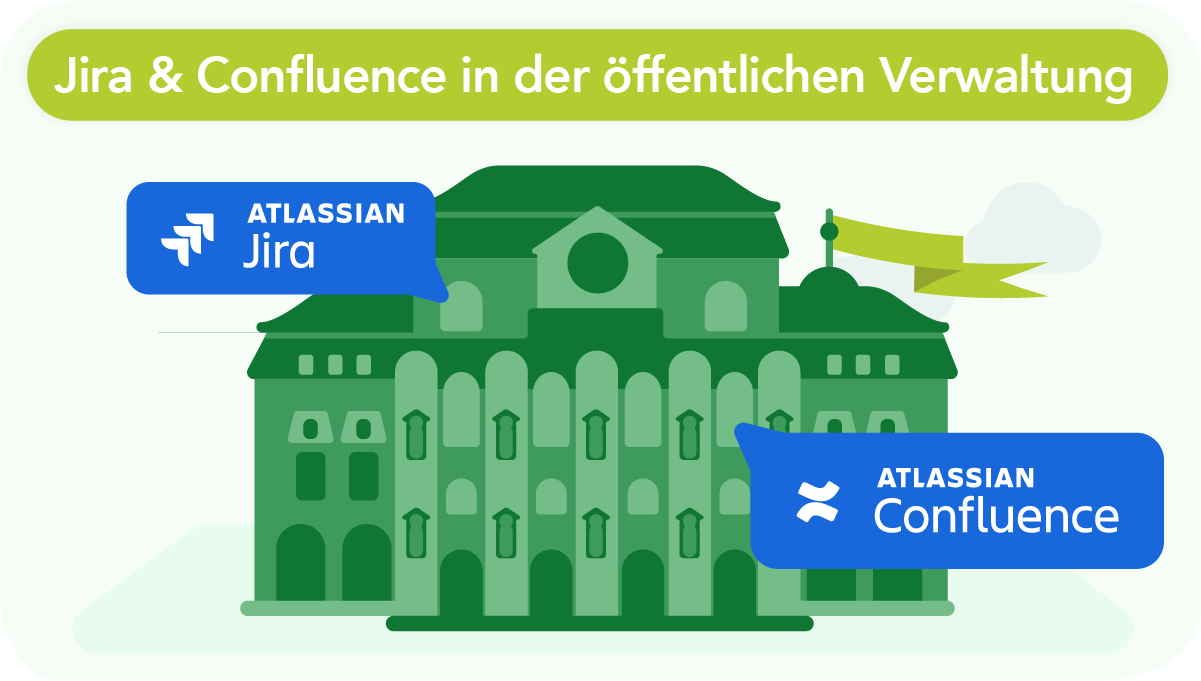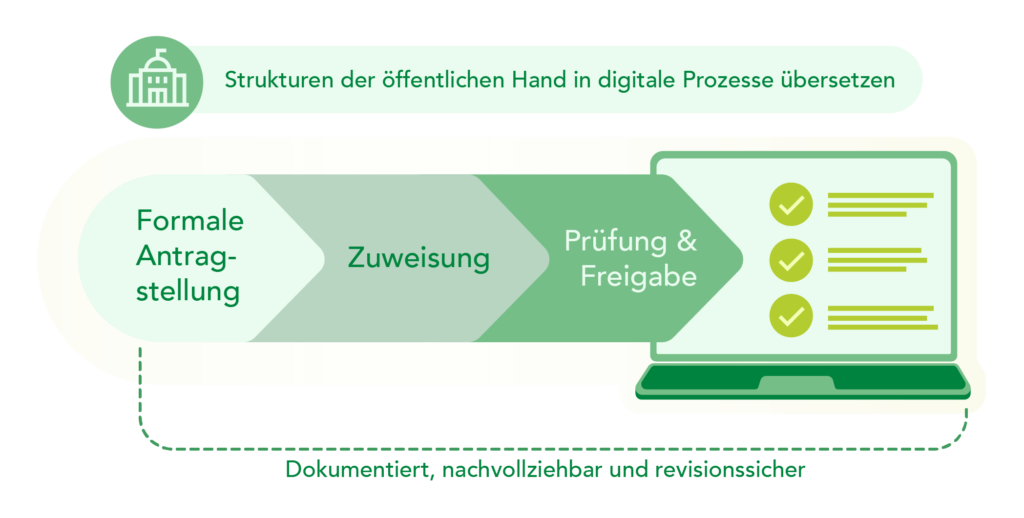
- Jira & Confluence digitize application and approval processes in public administrations.
- Workflows are mapped more transparently, faster, and in an audit-proof manner.
- Data protection, role-based permissions, documentation obligations are firmly integrated.
- Honicon supports administrations from the application to project governance – hands-on and ongoing.
In district offices, county administrations, municipal enterprises, and city-owned limited companies (GmbHs), decisions often require several rounds of coordination before they are finalized.
Approval chains span departments up to the district administrator level, interim alignments take time, deadlines are driven not by quarters but by political bodies. These conditions call for systems that understand this cadence without slowing down digitalization.
Honicon supports administrations and municipal enterprises at exactly this point. We advise a county in operating and continuously evolving its IT processes based on Jira, Confluence and Assets.
At a municipal subsidiary, we work closely with specialist departments, IT leadership and executive management to streamline processes from application submission to project acceptance.

Translating public-sector structures into digital processes
Jira and Confluence do more than just represent tickets and wiki pages. Properly configured, they connect line-of-business procedures, internal approval paths and project planning so that every step runs in a documented, traceable and audit-proof manner. In public administration, that means: mapping formal application submission, automatic assignment to the responsible office, review and approval processes in the right sequence, and logging at the level of individual work steps.
Our experience with governmental structures ensures that no workflow is created in a vacuum. Requirements from rules of procedure, internal responsibilities and countersignature rights flow into the configuration. This way, an application travels digitally the same path it used to take on paper — only faster, more transparently, and with fewer media breaks.
Data protection and documentation obligations firmly integrated
Strict requirements apply to data protection and information security in public administration. Jira and Confluence must not only meet them, but also document them demonstrably. We incorporate the requirements of the GDPR and state-specific regulations directly into process design: access controls, role-based permissions, audit-proof storage of sensitive documents, and automatic deletion schedules define the framework.
We do not only think about technical implementation. Internal coordination at the district administrator level or between a city-owned GmbH and the supervisory board is reflected in approval processes. Every step thus remains auditable in the system without making confidential data unnecessarily broadly accessible.
Progress at the pace of public administration
Digital transformation in public authorities does not follow the logic of start-ups. Decisions take time, and projects often run in phases shaped by budget cycles and meeting schedules. Honicon brings a spirit of progress into this structure without breaking it.
One example: In a county administration we introduced modern project management to transform previously paper-based processes into a continuous digital way of working. In parallel, we expanded the existing portal so that inquiries which previously only arrived through other channels can now be captured directly in digital form and processed internally. As a result, internal processes were accelerated and media breaks were largely avoided.

From a single ticket to project governance
Many public bodies first use Jira as a ticketing system for IT support. We extend this foundation into a complete project and process platform: procurement initiatives, construction projects, or grant applications can be managed as epics with clearly defined tasks and deadlines. In Confluence, accompanying project documentation, meeting minutes and resolution templates are created.
In practice, this means: the controlling department of a city-owned GmbH does not retrieve the current status of a project in a separate report, but sees it in real time in the system. Project management can immediately see whether deadlines are at risk, and executive management can prepare decisions on this basis — without anyone maintaining data in Excel spreadsheets in parallel.
Digitalization in public administration with a light touch
Technical possibilities in the public sector quickly run up against organizational limits. Not every department is enthusiastic about new systems, and not every process can be changed overnight. Honicon takes these steps deliberately: first mapping existing procedures, then gradually introducing more efficient workflows.
This is how acceptance grows. Employees see that digital workflows do not make their work more complicated, but simpler. Managers recognize that control information is more complete and available faster. And IT gets systems that not only run, but grow with the requirements.
Continuity and ongoing development
Projects in public administration do not end with go-live. Changes in legislation, internal reorganizations or new funding programs regularly lead to a need for adjustments. We support our customers in the long term, adapt workflows, extend permissions or integrate new modules.
This continuous work ensures that Jira and Confluence do not remain static tools, but become living platforms that pick up the administrative cadence and, at the same time, accelerate it step by step.
Honicon combines technical know-how with a deep understanding of how the public sector works. From this combination arise digital processes that meet formal requirements, respect internal pathways and still create efficiency gains. From the first application to successful project governance — in the county, in the city, in the municipal enterprise.